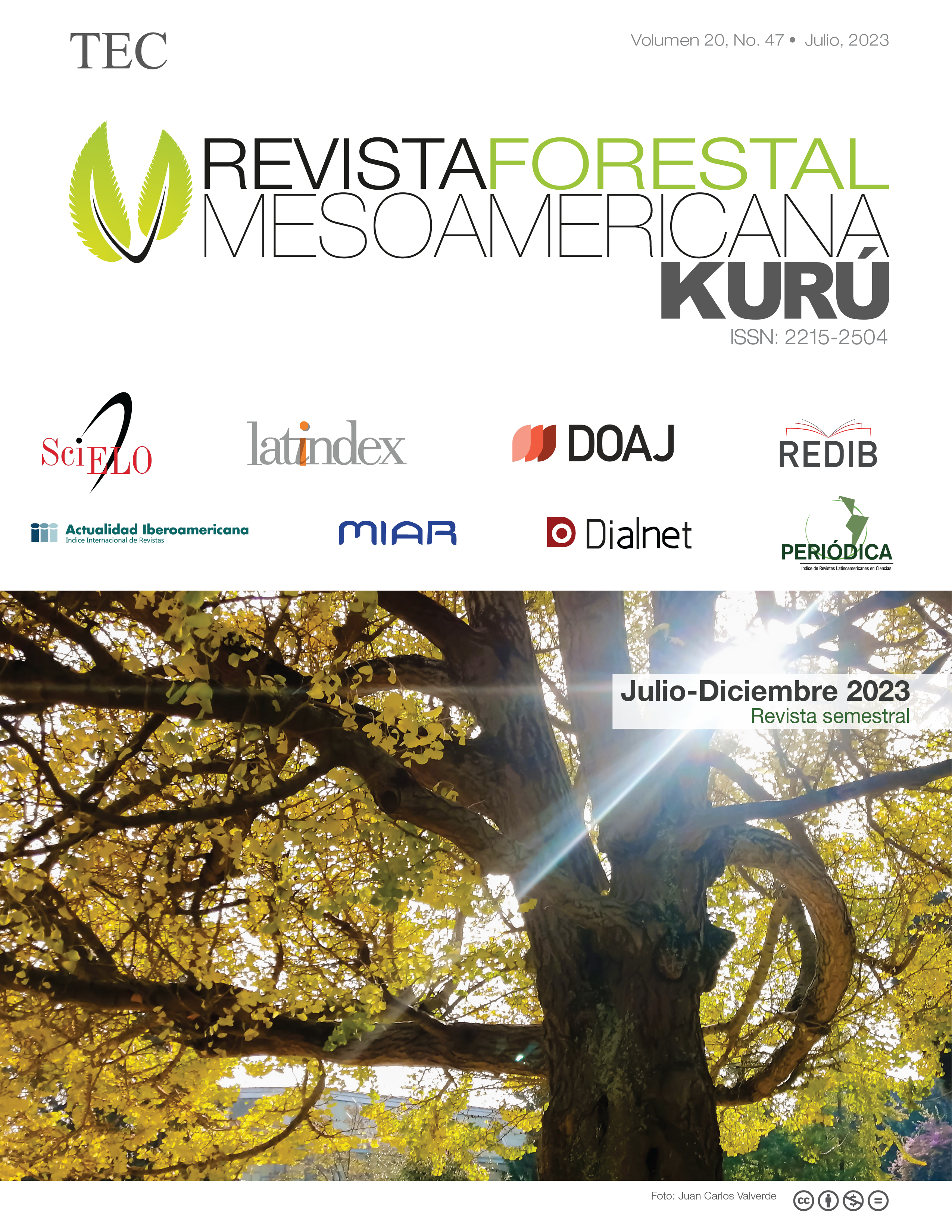Population characterization of Pteridium arachnoideum (Kaulf.) Maxon and its vegetation associated with the anthropic moorland of Souther Ecuador
Main Article Content
Abstract
The Ecuadorian moors affected by forest fires present changes in their structure, floristic composition, modifications in their ecological processes, and the appearance of invasive species. The present work was developed in the "Francisco Vivar Castro" University Park, with the purpose of characterizing the status of P. arachnoideum and its associated vegetation in twenty plots of 5 x 5 m, by identifying individuals greater than 5 cm in height. The variables measured were abundance, density, population structure, and spatial distribution; for the associated vegetation, we calculated the structural parameters of the vegetation, the degree of coverage of herbaceous species, and the degree of association with the species. The results were an abundance of 1 919 individuals of P. arachnoideum, a population density of 38 380 ind/ha, and a cluster spatial distribution. The specific richness of the anthropic moorland was 28 species, 27 genera, and 15 families; the species with the greatest ecological importance and that determine its structure were Baccharis latifolia (12,52%), Gaultheria erecta (12,35%), and Gynoxys nitida (11,85%); the plant cover of P. arachnoideum was between 25-50%, 46,42% of the species had a low association, 25% a medium association and 28,58% a high association. The presence of P. arachnoideum in the anthropic moorland was abundant and dominant, and shrubs and tree species showed different associated degrees as products of environmental conditions of anthropic moorland.
Key words: Association, Ecuador, fire, invasive, moorlands, restoration.
Article Details

This work is licensed under a Creative Commons Attribution-NonCommercial-NoDerivatives 4.0 International License.
Revista Forestal Mesoamericana Kurú is licensed under CC BY-NC-ND 4.0
Al enviar un artículo a la Revista Forestal Mesoamericana kurú (RFMK), los autores ceden los derechos patrimoniales a la editorial de la RFMK una vez su manuscrito haya sido aprobado para publicación, autorizando a la RFMK a editarlo, reproducirlo, distribuirlo, y publicarlo en formato físico y/o electrónico. La titularidad de los derechos morales sobre los trabajos objeto de esta cesión seguirá perteneciendo a los autores.

